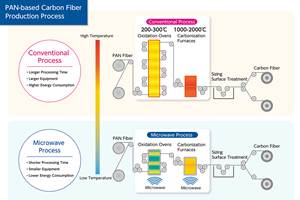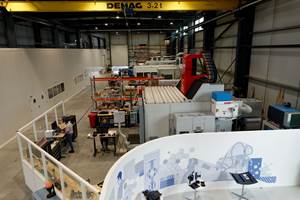Maryland offshore wind project authorized
The Maryland Public Service Commission has awarded offshore wind renewable energy credits to two offshore wind energy projects.
The Maryland Public Service Commission has awarded offshore wind renewable energy credits (ORECs) to two projects to be built off the coast of Maryland. The decision enables U.S. Wind Inc. and Skipjack Offshore Energy LLC to construct 368 MW of capacity, together yielding more than $1.8 billion of in-state spending, spurring the creation of almost 9,700 new direct and indirect jobs and contributing $74 million in state tax revenues over 20 years.
“The approval today of the nation’s first large-scale offshore wind projects brings to fruition the General Assembly’s efforts to establish Maryland as a regional hub for this burgeoning industry,” says W. Kevin Hughes, the Commission chairman. “We have taken great care to ensure that this decision maximizes economic and environmental benefits to the state while minimizing costs to Maryland ratepayers.”
Each company is awarded ORECs at a levelized price of $131.93/MWh for a term of 20 years, beginning in January 2021 for U.S. Wind and 2023 for Skipjack. According to the Commission’s independent consultant, Levitan & Associates, Inc., the net ratepayer bill impacts associated with the Commission’s approval are projected to be less than $1.40 per month for residential customers and less than a 1.4% impact on the annual bills of commercial and industrial (C&I) customers – both less than the ratepayer impacts authorized by the enabling legislation, the Maryland Offshore Wind Energy Act of 2013. Those impacts will not take effect until electricity is actually generated by the projects.
U.S. Wind’s project is expected to be operational in early 2020; Skipjack anticipates being in operation near the end of 2022. “All Maryland citizens can benefit from the economic opportunities these projects will create,” says commissioner Harold D. Williams. “Moreover, I am pleased that this condition in our order, along with commitments made by the developers, will continue efforts to realize the state’s diversity and equal employment goals.”
The projects are expected to produce numerous environmental and health benefits, including the reduction of at least 19,000 tons of carbon dioxide emissions per year for 20 years—helping to ensure that Maryland reaches its goal of reducing carbon emissions 40% by 2030. The projects will also mean that the sale of renewable energy credits (RECs) will have direct economic benefits in Maryland by offsetting some of the need for electricity suppliers to purchase RECs produced in other states. Maryland’s Renewable Energy Portfolio Standard (RPS) has a mandate of 25% of electricity purchased from renewable energy resources by 2020. The 2013 law created a carve-out for offshore wind energy in the RPS of up to 2.5% of total retail electricity sales.
During this proceeding deep concerns were expressed about the ability to see the turbines from shore and the impact those views would have on tourism and aesthetics. “We certainly recognize that there is strong public demand to make sure that sightlines to the turbines—particularly from Ocean City—are minimized to the fullest extent possible,” says commissioner Anthony O’Donnell. “As a condition of our order, US Wind is required to locate its project as far to the east (away from the shoreline) of the designated wind energy area as practical. Each developer also must take advantage of the best commercially available technology to lessen views of the wind turbines by beach-goers and residents, both during the day and at night.” Each company must notify the Commission by May 25, 2017 whether it accepts the conditions of approval contained in the order. In addition, awarding of ORECs is contingent on approval by the federal government of the developers’ site assessment plans, construction and operations plans, and other processes as required.
Related Content
Microwave heating for more sustainable carbon fiber
Skeptics say it won’t work — Osaka-based Microwave Chemical Co. says it already has — and continues to advance its simulation-based technology to slash energy use and emissions in manufacturing.
Read MoreComposites end markets: Electronics (2024)
Increasingly, prototype and production-ready smart devices featuring thermoplastic composite cases and other components provide lightweight, optimized sustainable alternatives to metal.
Read MoreJEC World 2023 highlights: Recyclable resins, renewable energy solutions, award-winning automotive
CW technical editor Hannah Mason recaps some of the technology on display at JEC World, including natural, bio-based or recyclable materials solutions, innovative automotive and renewable energy components and more.
Read MorePlant tour: Daher Shap’in TechCenter and composites production plant, Saint-Aignan-de-Grandlieu, France
Co-located R&D and production advance OOA thermosets, thermoplastics, welding, recycling and digital technologies for faster processing and certification of lighter, more sustainable composites.
Read MoreRead Next
Developing bonded composite repair for ships, offshore units
Bureau Veritas and industry partners issue guidelines and pave the way for certification via StrengthBond Offshore project.
Read MoreVIDEO: High-volume processing for fiberglass components
Cannon Ergos, a company specializing in high-ton presses and equipment for composites fabrication and plastics processing, displayed automotive and industrial components at CAMX 2024.
Read MoreAll-recycled, needle-punched nonwoven CFRP slashes carbon footprint of Formula 2 seat
Dallara and Tenowo collaborate to produce a race-ready Formula 2 seat using recycled carbon fiber, reducing CO2 emissions by 97.5% compared to virgin materials.
Read More









.jpg;maxWidth=300;quality=90)















